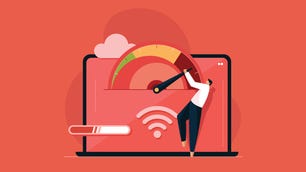Inflation numbers cooled again in September, reinforcing expectations of another interest rate cut at next week’s Federal Reserve meeting.
The Fed’s preferred inflation indicator rose 2.1% annually in September, as expected. Month over month, prices rose by 0.2%, according to the personal consumption expenditures index released Thursday by the US Department of Commerce.
The Fed started raising interest rates after inflation took off three years ago, peaking at 9.1%. Many expected higher interest rates to trigger a slowdown in the economy as borrowing became more expensive. But unemployment has remained relatively low at 4.1% and consumer spending has stayed strong.
“I remember two years ago when forecasters were saying, ‘Well, you know, there’s really no way we’re going to get inflation down without a recession,'” Heather Boushey, an economist on the White House Council of Economic Advisers, told CNET.
Core inflation, which excludes food and energy, rose 2.7% annually. Although overall inflation has continued a downward trend, core inflation has remained stubbornly strong throughout the summer. Housing and health care costs continue to be the biggest contributors to higher prices.
The latest inflation data, along with some signs of a cooling job market, has most experts predicting the Fed will cut interest rates by a quarter of a percent at its meeting next week.
The Fed surprised many in September when it voted to cut the federal funds rate by a half-percent instead of the expected quarter-percent. The Federal Open Market Committee lowered the federal funds rate to 4.75% to 5% after holding interest rates at record highs for more than a year in an attempt to bring soaring inflation back down to 2%.
So what do the latest inflation numbers mean for your finances for the rest of 2024 and beyond?
Why does inflation matter?
Inflation measures how much prices are rising for goods and services. Inflation isn’t necessarily bad. If demand is causing prices to rise, inflation can be a sign of a growing economy and consumers confident enough to spend. However, when inflation outpaces wages, as it did in the wake of the pandemic, your purchasing power decreases — essentially, you can’t buy as much with the same amount of money.
The Fed started raising interest rates in early 2022 to try to bring inflation back under control. After its meeting in September, the Fed said it had “greater confidence” that inflation was moving sustainably toward its 2% goal.
However, even if prices aren’t going up as fast, they’re still high for most of us. A CNET survey found the majority of people are making sacrifices this holiday season to keep their spending in check.
Pro tip: If you’re struggling to break free of the paycheck-to-paycheck cycle, check out these expert tips.
When will we get relief from high interest rates?
Although it was the biggest single interest rate cut since 2008, the Fed still only lowered the federal funds rate a half-percent, which doesn’t really move the needle on interest rates for most people. To see some real relief, we’ll need several more rate cuts as well as time to let them take effect, experts say.
But don’t expect more jumbo cuts anytime soon, as the Fed will continue to monitor the stickier core inflation, according to Armando Gonzalez, CEO and founder of Bigdata.com.
“The headline PCE supports the case for rate cuts, while the core reading suggests caution is warranted,” he said in an email, adding that he expects a 0.25% cut at the November meeting.
Most experts anticipate more interest rate cuts in 2025. If all goes as expected, we could see long-term easing of mortgage rates and credit card APRs in 2025, experts predict.
However, your interest rate on saving products like CDs and high-yield savings accounts also drop when the Fed cuts rates. Many rates have already begun to drop, but you can still have time to maximize your earnings.
 meganwoolsey Home
meganwoolsey Home




